V700s manufactured in 1975/1976
Moto Guzzi V700, V7 Special, Ambassador, 850 GT, 850 GT California, Eldorado, and 850 California Police models
Created:
Updated:
Thanks to Tom Short and Moe Moore from Cycle Garden and Lieven Loots for sending me this information in a private email.
Tom short:
Per our discussion at John's [80th birthday party], here are my pics of a V700 I took in Germany.
The story I got from the owner was, 200 were built for export to the Argentinean Police. They refused them because the new 850 T was out, and they wanted those instead. An Italian Guzzi shop purchased all the bikes from Guzzi, stripped them down and painted them orange. You can see in the pics that the block is ribbed like an 850, but I cannot tell and don't remember if it has a 4 LS front brake.
Moe Moore from Cycle Garden:
Those are just like the ones I saw in Holland, dated , they where white and had the Euro buddy seat on them.
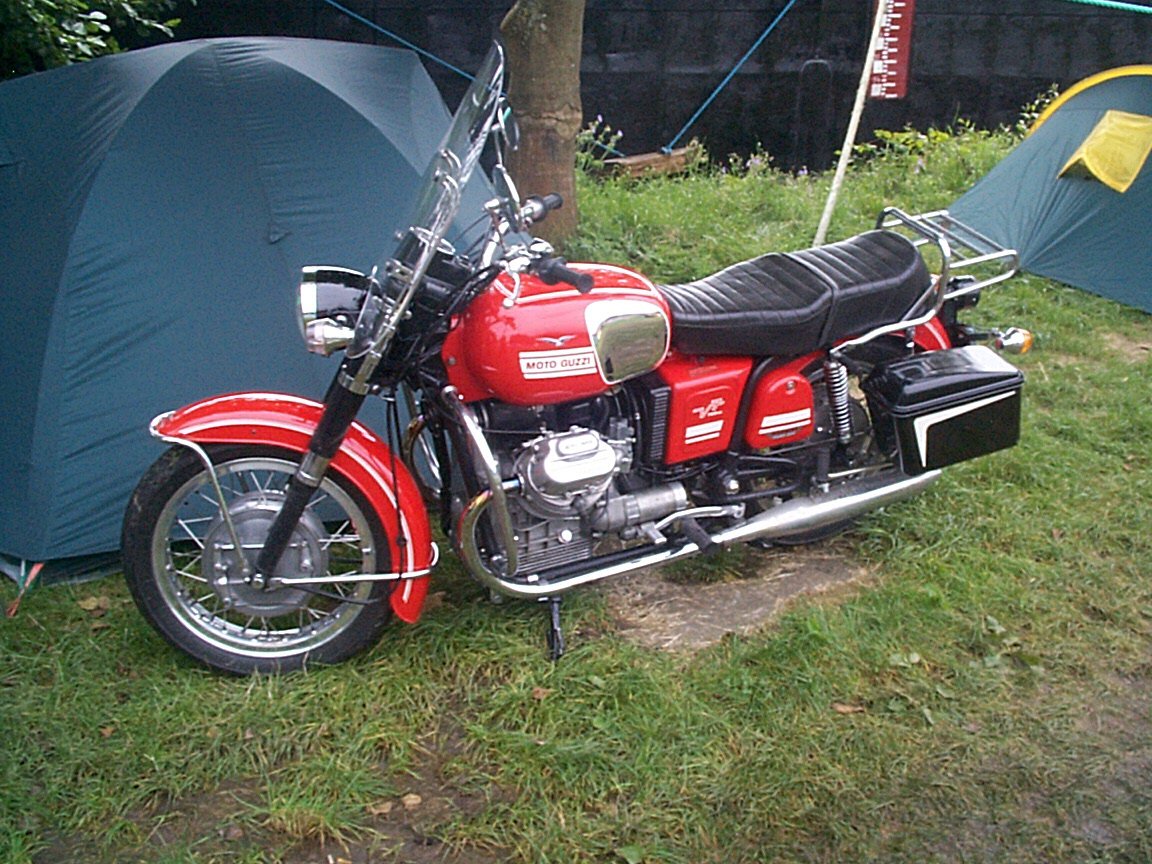
Photo courtesy of Tom Short.
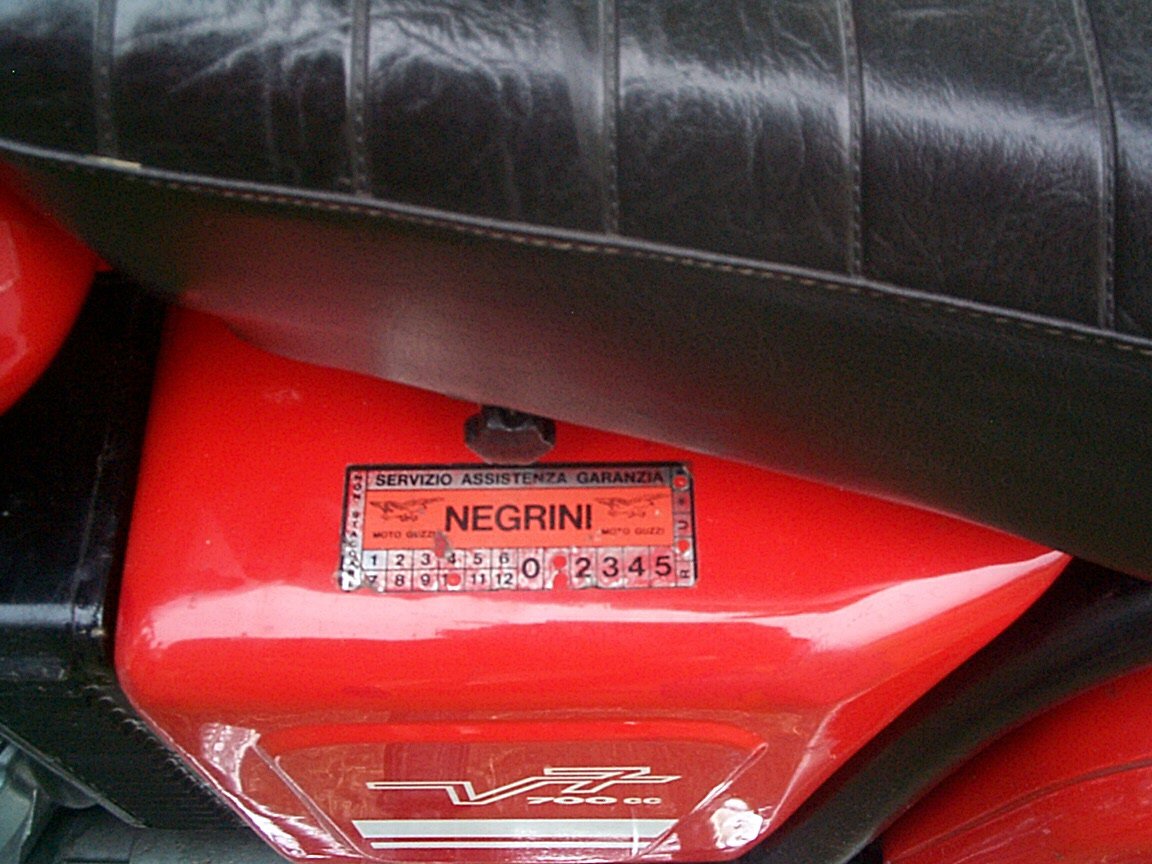
Photo courtesy of Tom Short.
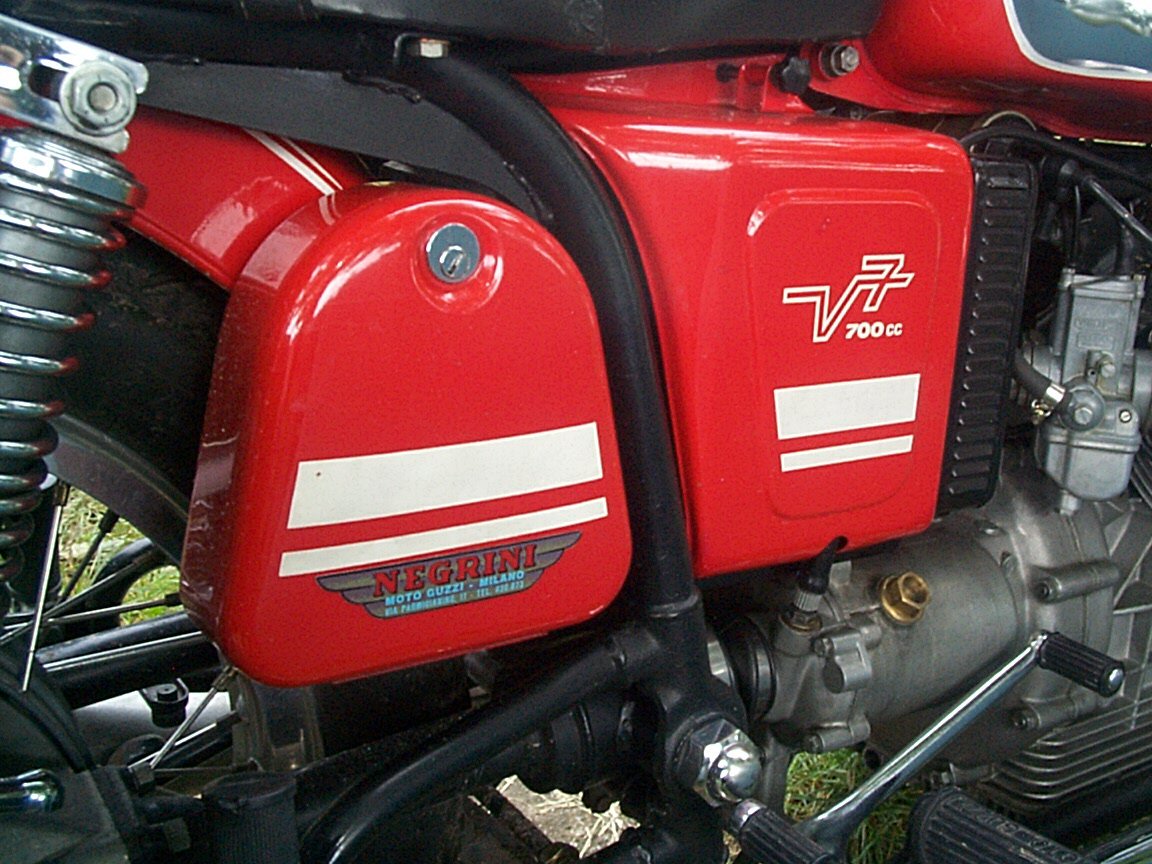
Photo courtesy of Tom Short.
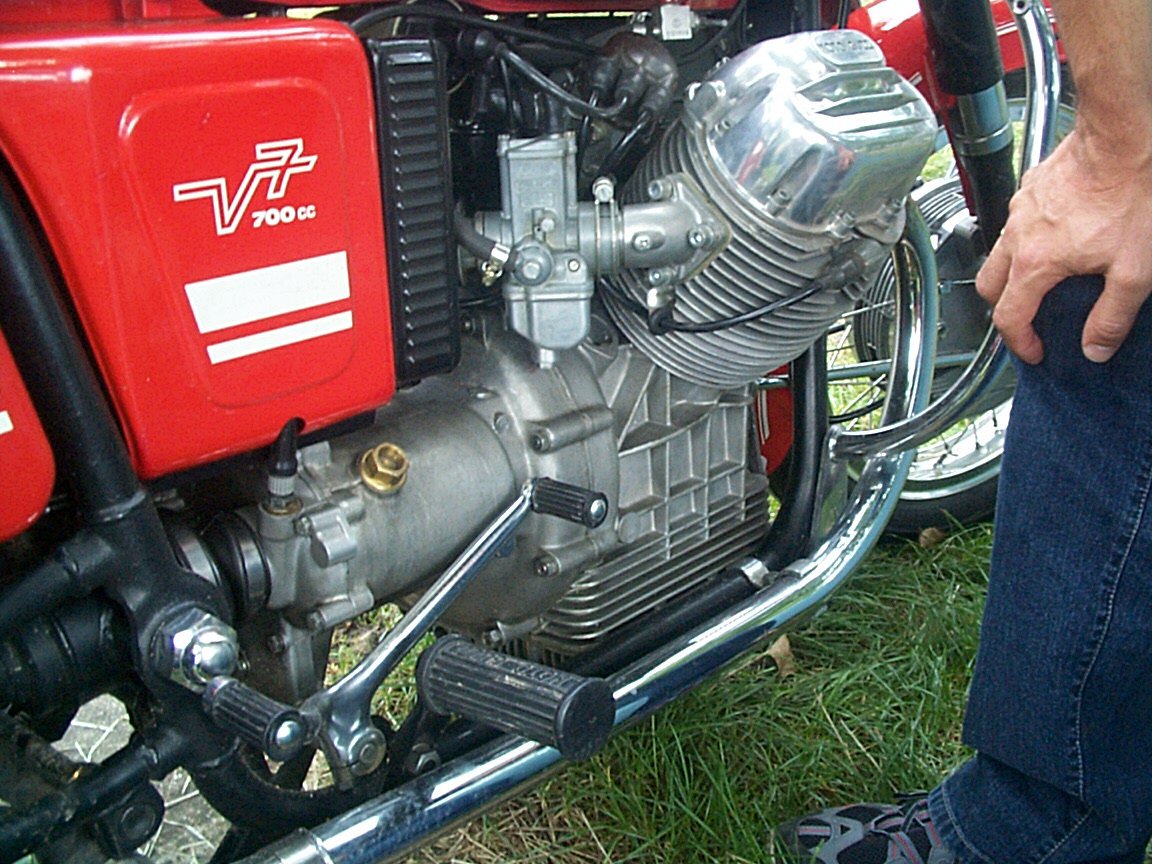
Photo courtesy of Tom Short.
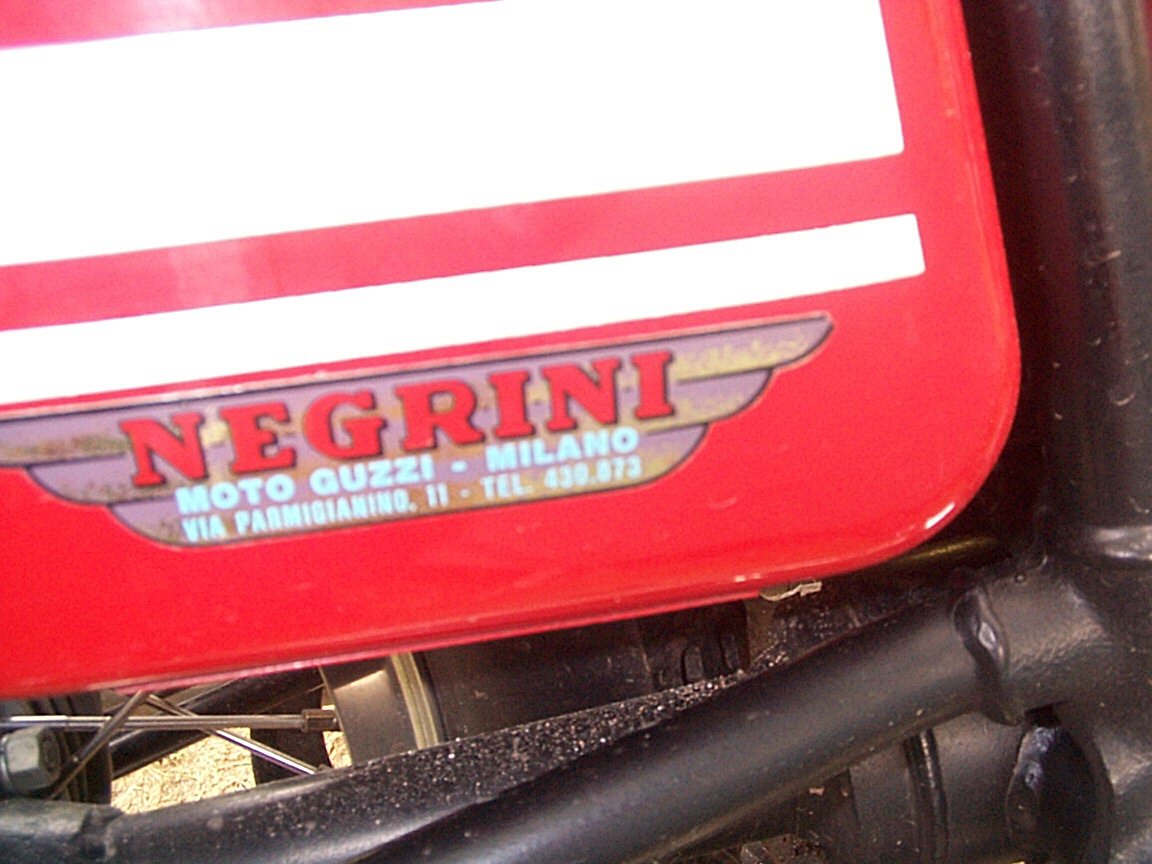
Photo courtesy of Tom Short.
Lieven Loots:
I just read the information on late V7 700's on This Old Tractor. Here's a link where you can find more information on them: The History of the
Creole(V7 700 2nd series / )
Here is the Google translation of the original article written in Italian:
The History of the
Creoles(V7 700 2nd seriesDate: -) - Research by Franco R. and Davide M.From its origins, the V7 was a motorcycle highly appreciated and requested by Italian and foreign public administrations, for which it was expressly designed and created. The demand was fairly constant throughout the decade - ; however, due to the oil crisis and the technical evolution of both the other manufacturers and Moto Guzzi itself (1), various batches of V7, already in production for public bodies, in the years - , were canceled in favor of the new ones models.
The motorcycles that were not collected were disassembled and repainted in a particular color, the so-called
Benelli red(2), to be offered on the private market, at anattractiveprice.Once the conversion of the
ex PAV7s in Guzzi was completed, it was then realized that, in the warehouse, there were surplus components and spare parts, such as to allow the production of other examples ofred V7s: therefore the offer continued, still at good prices and at the request of customers and dealers, throughout 1976 and beyond (some publications speak of the last examples completed in 1977).Of this version of the 700, very similar in terms of equipment and insignia to the one supplied to the Traffic Police, a few hundred examples had to leave Guzzi's gates in the two-year period - (); intended mainly for the private public and at a price, as already mentioned, very attractive (
had tobecause the data in possession of Moto Guzzi itself are incomplete and the various sources, in this regard, conflicting; it also seems - which is not certain and remains to be proven - that Moto Guzzi, to optimize the archiving and annotation of orders, madeleapsin the numbering of the frames: thisdoubt, after many years, does not allow us to know, with good certainty, the exact numbers of the specimens produced per model).The
hybridV7s (or also calledCreoles, or700 Rosse) had typical characteristics of both the first700and the more recent850 GT.Characteristics of the V7 700 were:
- the 703 engine .7 cc (but with a ribbed crankcase, less subject to breakage);
- the 4-speed gearbox, with smooth crankcase (without the reinforcing ribs introduced with the 5-speed gearbox of the 850 GT);
- the dashboard of the first type, with the km counter only, very similar to the one fitted to most versions of the Fiat 500;
- the external appearance (apart from the colour);
- the single-seater seat with rear springs of the Public Administrations and, sometimes, mounted on the rear mudguard, the luggage rack with the rectangular cushion seat for the passenger, traditional Guzzi;
- often, front engine protection bars with holes prepared for the winter leg protectors and sirens, accessories never mounted on the examples produced for the
civilianmarket.Characteristics of the 850 GT they were:
- the 4-shoe front brake
- the engine crankcase with reinforcing ribs
- the rear bevel gear pair, with the larger box and the typical lower
cupwhich allowed the quantity of oil in the final transmission to be increased.- The tank, with chromed cheeks, could be either the typical more square 20 liter tank or the more rounded 22 liter tank; the color was most frequently red (but there are many exceptions).
- The graphics were characteristic: silk-screened, of the V7 special type, but in white;
V7 700ccwritten in white on the side panels, white bands on the side panels and side cases; double white fillets on the fenders and on the upper face of the tank; again, on the sides of the tank, the writingMoto Guzzibetween white lines and a white eagle, or even, but only on request, the typical white, curled lines around the cheeks and the writingMoto Guzzi; livery very similar to the Stradale specimens.Finally, it must be said that the end customer, through his Guzzi dealer, without prejudice to the basic setting, could decide to make changes to the aesthetics of the motorbike booked. This explains the presence, on many
Creoles, of variants that have existed since the origin: for example the presence of thedome(PA type); side bags (V7 type or California type); black in color and chrome mudguards; of thebull hornhandlebars fitted to the 850 GT California and US export bikes; of the classic long two-seater saddle or the military single-seater saddle.
- At Moto Guzzi, the imminent launch of the 850 T series finally proposed the adoption of disc brakes, first on the front wheel (
Tseries) and then also on the rear wheel together withintegral braking(T3series); furthermore, chassis improved by the new V7 sport-derived chassis, alternator on the crankshaft instead of the belt-driven dynamo, etc.- At the time, Guzzi and Benelli belonged to a single owner - De Tomaso - and there was a surplus of red in stock at Benelli, which was also used in Guzzi, for the
red V7sand later, also for the850 Le Mansand other productions.
*** Any further news and information on the
Creoleswill be very welcome to update these notes.If you have documentation and testimonials... write to us